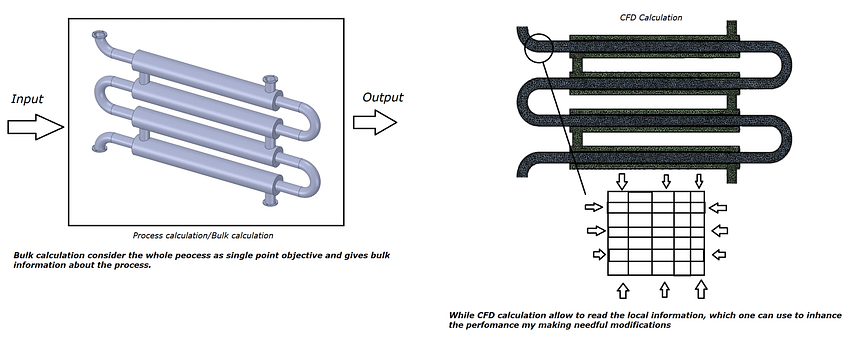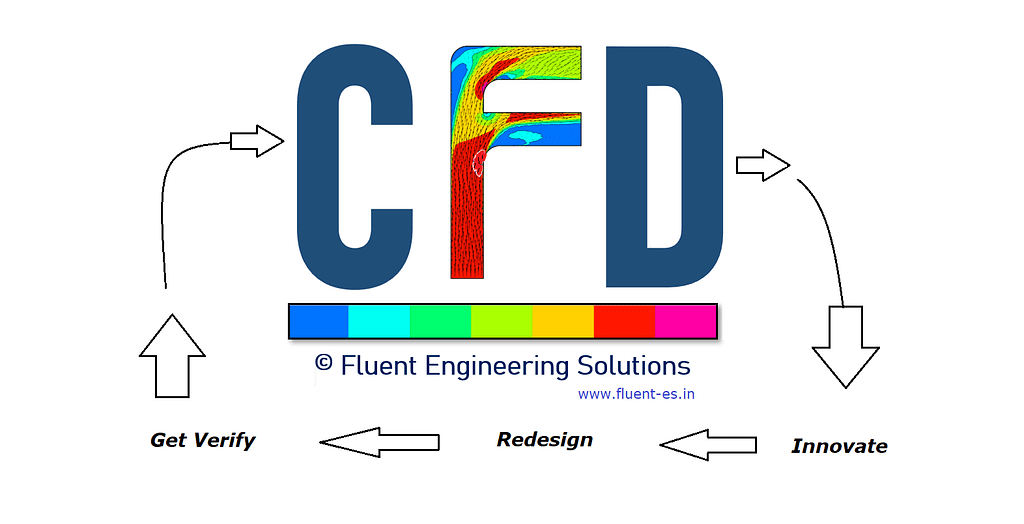Computational Fluid Dynamics (CFD) is the branch of continuum mechanics that deals with heat transfer, mass transfer and momentum transfer associated with fluid.
Chemical engineering or process engineering calculations provide general information about the process in contrast to CFD which delivers every significant factor and crucial specifications required for product development. For example, in the case of a double pipe heat exchanger, the conventional design technique will be limited to manual calculation and would not deliver anything more than the overall heat transfer coefficient and temperature difference of incoming hot and cold fluid while CFD, will integrate the process domain into a number of an individual computational domain called “cells” or “mesh element”, thus retrieving crucial details. Not only this but also CFD is highly specialized as it establishes compatibility of these details with that of the flowing fluids through expertly automated mathematical calculations thus transforming the information associated with flowing fluids.

The specialty of CFD lies in a detailed visualization facility in the form of contours, streamlining, plots, etc that allows users to inspect the flow in detail in a way that one can significantly interpret the information. This is proved as a great tool to facilitate effective design-related decisions and enhance efficiency by increasing its compatibility with complex potential designs.
Yet another limitation of the Conventional or experimental techniques is that they cannot be deployed under all circumstances. This is because one cannot be physically present to track the performance details of a flying plane or an operating underwater submarine in a war zone. Thus, through conventional techniques, it is impossible to effectively provide solutions due to the three major factors
- Limited operating space (full-scale ship, airplane)
- Risk of Hazards (explosion, radiation, pollution)
- Physics Limitation (weather prediction, flow visualization)
n contrast to the above-demonstrated limitations, CFD provides improvised solutions by
- Simulating the process rather than relying on traditional “build & test” techniques.
- Providing cost-efficient and fast-paced time-effective techniques.
- Validating a reliable database pertaining to every single element that’s encompassed within the process.
Fluent Engineering Solutions are the CFD Specialists based in Pune, Bhosari industrial area, India, and have expertise partner Omnia Engineering from the Netherlands and have been CFD Consultants in Pune for various clients. Along with our years of experience from past projects, we have seen many of our clients still using the conventional method to design their process equipment and that leads to “Oversizing process equipment” and thus incurring the overhead cost.

If manufacturers understand and visualize the fluid dynamics of their ‘existing product’ with the help of CFD, they can ‘Increase productivity multiple times. Prediction of the future problem associated with the product ‘Increase life cycle of the product/equipment and thus avoiding unnecessary work and breakdown time. When it comes to the process Industry one has to ensure the ‘performance of the processing system’ and ‘quality’ of the product’.
Anticipating the performance of the system prior to its manufacturing saves a lot of costs and helps achieve organizational goals thus making a difference.

